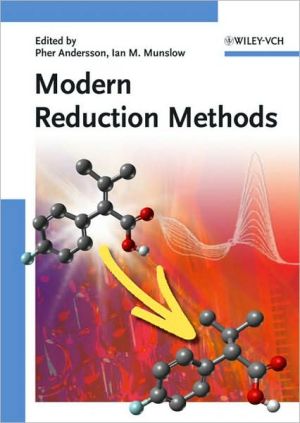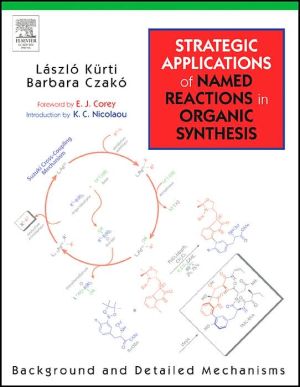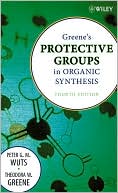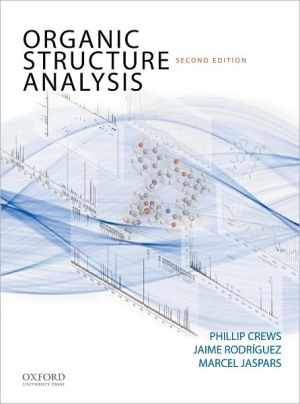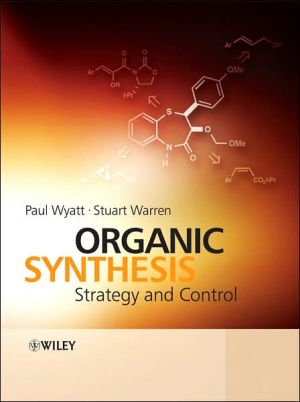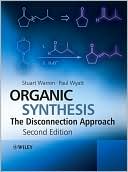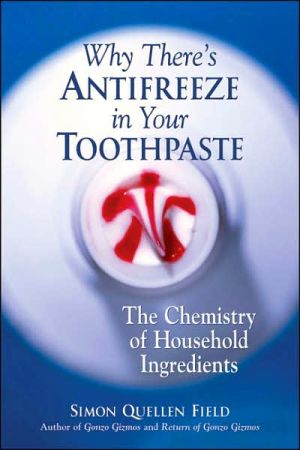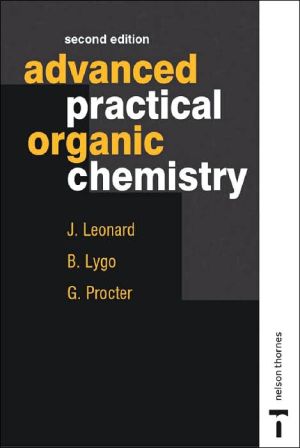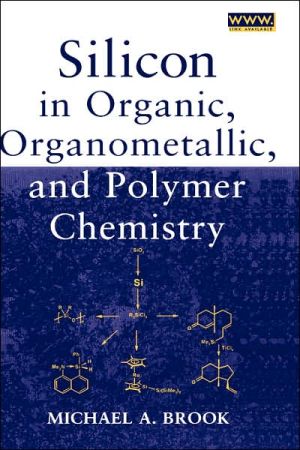Modern Reduction Methods
With its comprehensive overview of modern reduction methods, this book features high quality contributions allowing readers to find reliable solutions quickly and easily.\ The monograph treats the reduction of carbonyles, alkenes, imines and alkynes, as well as reductive aminations and cross and heck couplings, before finishing off with sections on kinetic resolutions and hydrogenolysis.\ An indispensable lab companion for every chemist.
Search in google:
Reductions are the counterpart of oxidations and are widely used in synthetic organic chemistry. They vary widely in their specifics, ranging from hydrogenations to hydride transfer or simply electron transfers, and their vast number makes a comprehensive review virtually impossible. This monograph thus covers recent developments, focusing on general and synthetically useful reductions in frequent use by chemists. The high quality contributions treat the reduction of carbonyles, alkenes, imines and alkynes, as well as reductive aminations and cross and heck couplings, before finishing off with sections on kinetic resolutions and hydrogenolysis.With its comprehensive overview of modern reduction methods, this book allows readers to find reliable solutions quickly and easily, making it an indispensable lab companion for every organic, catalytic and natural products chemist, as well as chemists in industry.
Preface. List of Contributors. Part One Alkene Reductions. 1 Reduction of Functionalized Alkenes (Jean-Pierre Genet). 1.1 Introduction. 1.2 Asymmetric Hydrogenation of Dehydroamino Acids. 1.3 Simple Enamides. 1.4 Hydrogenation of Β-(Acylamino) Acrylates. 1.5 Hydrogenation of Unsaturated Carboxylic Acids and Esters. 1.6 Hydrogenation of Unsaturated Esters, Lactones, Amides and Ketones. 1.7 Hydrogenation of Unsaturated Alcohols. 1.8 Synthesis of Pharmaceutical Intermediates. 1.9 Conclusion. 2 Hydrogenation of Unfunctionalized Alkenes (Jarle S. Diesen and Pher G. Andersson). 2.1 Introduction. 2.2 Iridium Catalysis. 2.3 Ruthenium and Rhodium Catalysis. 2.4 Chiral Metallocene Catalysts. 2.5 Conclusion. 3 The Development and Application of Rhodium-Catalyzed Hydroboration of Alkenes (Anthony G. Coyne and Patrick J. Guiry). 3.1 Introduction. 3.2 Mechanism. 3.3 Selectivity of Metal-Catalyzed Hydroboration. 3.4 Recent Applications in Synthesis. 3.5 Conclusion. 4 Alkene Reduction: Hydrosilylation (Penelope A. Mayes and Patrick Perlmutter). 4.1 Introduction. 4.2 Isolated Alkenes. 4.3 Conjugated Alkenes. 4.4 α,Β-Unsaturated Systems. 4.5 Conclusions. Part Two Carbonyl Reactions. 5 Carbonyl Hydrogenation (Christian Hedberg). 5.1 Introduction. 5.2 Asymmetric Hydrogenation of Activated Ketones and Β-Keto Esters. 5.3 Ketone Hydrogenation. 6 Reduction of Carbonyl Compounds by Hydrogen Transfer (Serafi no Gladiali and Rossana Taras). 6.1 Introduction. 6.2 Historical Overview. 6.3 General Background. 6.4 Hydrogen Donors. 6.5 Catalysts. 6.6 Mechanisms. 6.7 Ligands. 6.8 Substrates. 7 Carbonyl Hydroboration (Noriyoshi Arai and Takeshi Ohkuma). 7.1 Introduction. 7.2 Recent Topics in Diastereoselective Reduction. 7.3 Enantioselective Reduction. 7.4 Synthetic Applications. 8 Diverse Modes of Silane Activation for the Hydrosilylation of Carbonyl Compounds (Sebastian Rendler and Martin Oestreich). 8.1 Introduction. 8.2 Metal-Catalyzed Hydrosilylations. 8.3 Transition-metal-free Hydrosilylations. 9 Enzyme-catalyzed Reduction of Carbonyl Compounds (Kaoru Nakamura and Tomoko Matsuda). 9.1 Introduction. 9.2 Hydrogen Sources. 9.3 Methodology for Stereochemical Control. 9.4 Medium Engineering. 9.5 Synthetic Applications. 9.6 Conclusions. Part Three Imino Reductions. 10 Imine Hydrogenation (Carmen Claver and Elena Fernández). 10.1 Recent Advances in the Asymmetric Hydrogenation of Imines. 10.2 Green Approaches. 10.3 Mechanistic Insights. 11 Imino Reductions by Transfer Hydrogenation (Martin Wills). 11.1 History and Background. 11.2 Mechanisms of C=N Bond Reduction by Transfer Hydrogenation. 11.3 Asymmetric Reduction of C−N Bonds: Catalysts, Mechanisms and Results. 11.4 Specific Synthetic Applications. 11.5 Conclusion. 12 Hydroboration and Diboration of Imines (Stephen A. Westcott and R. Thomas Baker). 12.1 Introduction. 12.2 Uncatalyzed Reactions. 12.3 Catalyzed Reactions. 12.4 Conclusions. 13 Hydrosilylation of imines (Olivier Riant). 13.1 Introduction. 13.2 Rh, Ir, Ru Based Catalysts. 13.3 Titanium-based Catalysts. 13.4 Zinc-, Copper-, and Rhenium-based Catalysts. 13.5 Lanthanide-based Catalysts. 13.6 Tin-based Catalysts. 13.7 Chiral Lewis Bases as Catalysts. 13.8 Miscellaneous Methods. 13.9 Conclusion. Part Four Miscellaneous Reductions. 14 Alkene and Imino Reductions by Organocatalysis (Hans Adolfsson). 14.1 Introduction. 14.2 Reducing Agents. 14.3 Alkene Reduction. 14.4 Imine Reductions. 14.5 Concluding Remarks. 15 Alkyne Reductions (Ian J. Munslow). 15.1 Introduction. 15.2 Hydrogenation. 15.3 Hydroboration. 15.4 Hydrosilylation. 15.5 Conclusions. 16 Metal-Catalyzed Reductive Aldol Coupling (Susan A. Garner and Michael J. Krische). 16.1 Introduction – Reductive Generation of Enolates from Enones. 16.2 The Reductive Aldol Reaction. 16.3 Conclusion. 17 Dissolving Metals (Miguel Yus and Francisco Foubelo). 17.1 Introduction 419 17.2 Reduction of Compounds with C=X Bonds. 17.3 Reduction of Carboxylic Acids and Their Derivatives. 17.4 Reduction of functional groups bearing N, O and S. 17.5 Reduction of C=C and C≡C Bonds. 17.6 Partial Reduction of Aromatic and Heteroaromatic Rings. 17.7 Reduction of Compounds with C−X Bonds. 18 Hydrometallation of Unsaturated Compounds (Usein M. Dzhemilev and Askhat G. Ibragimov). 18.1 Introduction. 18.2 Thermal Hydroalumination. 18.3 Catalytic Hydroalumination. 18.4 Catalytic Hydromagnesiation. 18.5 Summary. Index.
